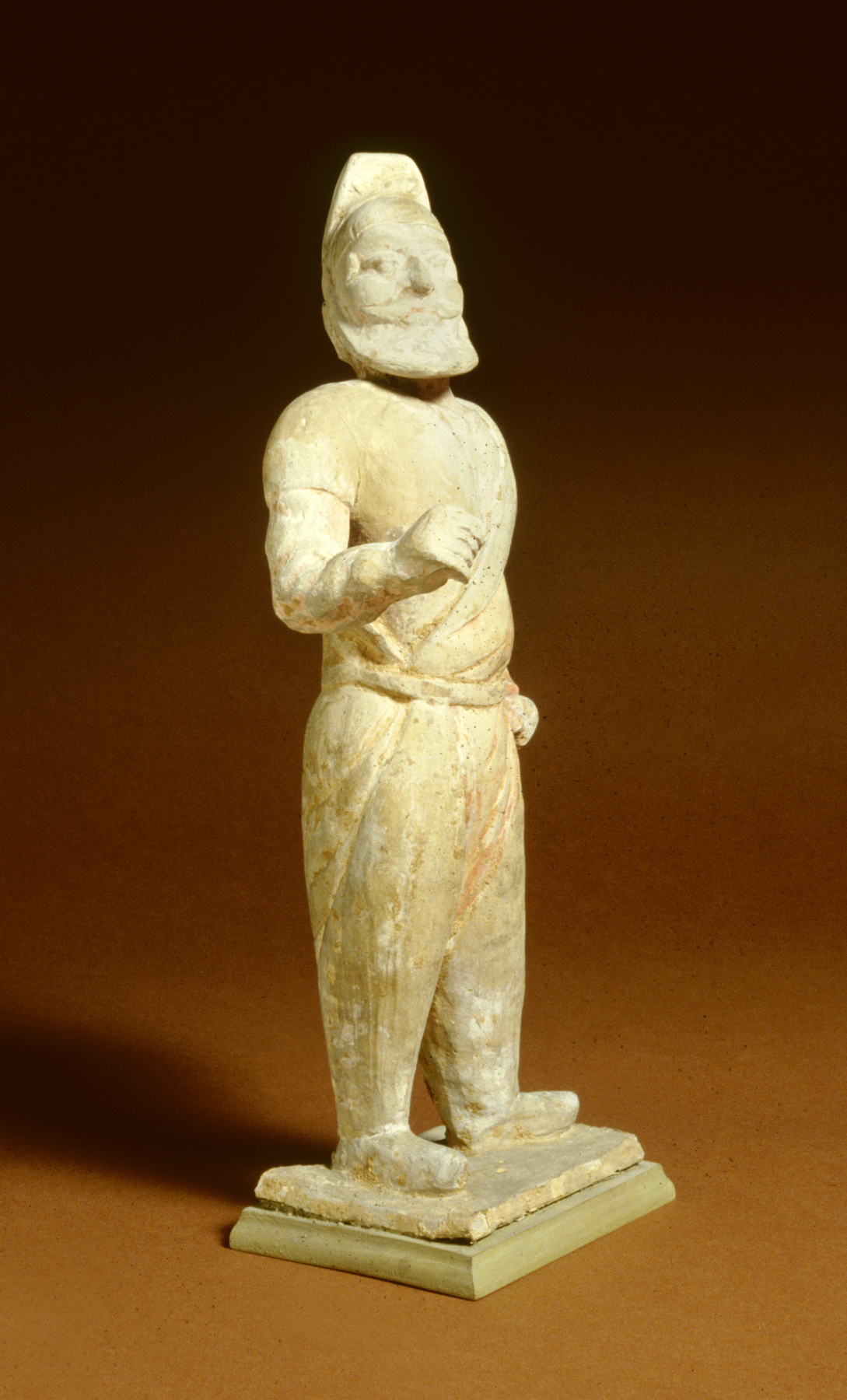Horse Groom
(China )
Through much of the Tang dynasty (618–907), commerce and travel between China and the cultures across Central Asia encouraged a variety of ethnic and religious groups to pass through or reside in China. This bearded figure, as suggested by his clothing style and facial features, was likely modeled on a person from Central Asia. His occupation as a horse groom also reflected the importance of horses during the Tang. The most sought-after steeds were raised in Central Asia.
Rituals and paraphernalia to mark death reflect China’s changing beliefs connecting death, the soul, and the afterlife. By the 4th century BCE, tomb designs and furnishings suggest a belief in the afterlife that took on different forms. One belief maintained that the deceased’s soul ascended to a paradise, while another proposed that the soul remains in the tomb. A third belief suggested a person had two souls that parted ways upon death: one traveling to paradise and the other remaining in the tomb. To prepare for any and all of these possibilities, tombs were decorated and furnished with reminders of an idealized everyday life and scenes of fantastical and heavenly worlds.
By the Tang dynasty (618–907), the practice of placing clay figures in human form in tombs was common among elite Chinese. Most figurines represented the attendants who may have served the deceased during their lifetime—including officials, warriors, entertainers, grooms, and servants—and continued to serve into the afterlife.
Provenance
Provenance (from the French provenir, 'to come from/forth') is the chronology of the ownership, custody, or location of a historical object. Learn more about provenance at the Walters.
William T. / Henry Walters Collection, Baltimore [date and mode of acquisition unknown]; Walters Art Museum, 1931, by bequest.
Conservation
| Date | Description | Narrative |
|---|---|---|
| 6/14/1960 | Treatment | cleaned |
Geographies
China (Place of Origin)
Measurements
Overall w/ base, H: 14 9/16 × W: 5 1/16 × L: 5 11/16 in. (37 × 12.9 × 14.5 cm)
Credit Line
Acquired by William T. or Henry Walters, before 1931
Accession Number
In libraries, galleries, museums, and archives, an accession number is a unique identifier assigned to each object in the collection.
In libraries, galleries, museums, and archives, an accession number is a unique identifier assigned to each object in the collection.
49.2331


